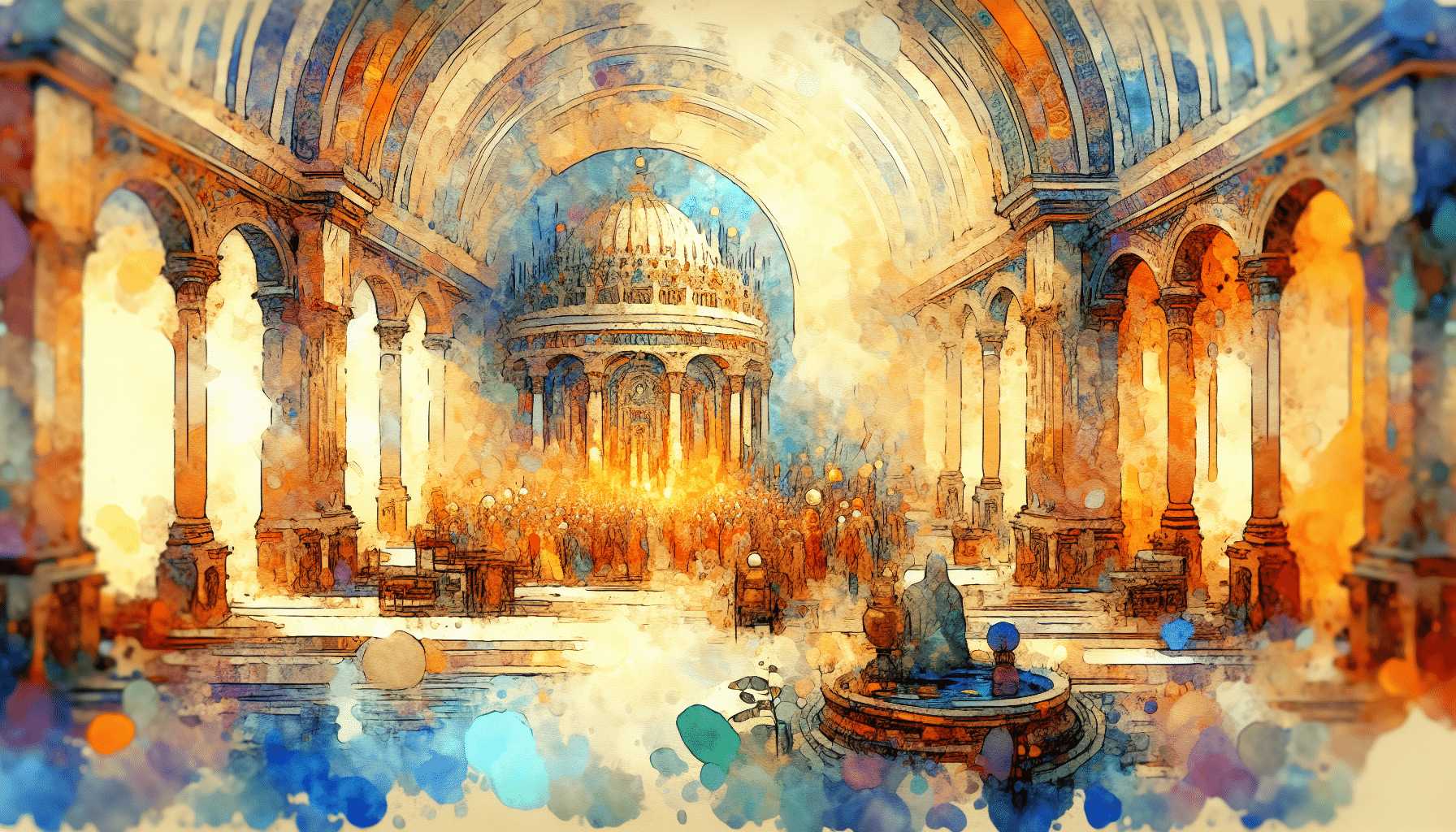The Forgotten Manuscript: An Archaeologist’s Quest Unravels Ancient Myths
The orange hues of dusk blended into the horizon as Professor Helena Roth stood amidst the ruins of what once was a grandiose temple. She was an archaeologist at the peak of her career, a woman whose name stirred respect in academic circles for her unrelenting commitment to uncovering the past. Yet, it was not just Roth’s intellect that made her distinguished; it was the fiery passion in her eyes, a fervor for discovery that outshone even the midday sun of the Mediterranean. Scribbled notes, sketches, and polaroid photographs were her constant companions, filling the leather satchel that clung to her side.
Their journey had taken them through the tangled forests of the unnamed island, where myths spoke of forgotten civilizations and ancient wisdom. Her team, an eclectic mix of eager students and seasoned scholars, pitched tents at the base of what was believed to be the threshold to history. Roth, however, felt an insatiable thirst for the whispers of the past that seemed to echo among the stones. When others settled in for the demanding excavations, she wandered among the columns, her fingers dancing over each inscription, each carving, as though they were keys to unlocking lost narratives.
One particular evening, as the camp settled into a quiet huddle, Roth encountered a peculiar stone slab partially buried beneath the rubble. It was the calligraphy, an ancient script so rare that it rendered the slab priceless, that drew her in. With great care, she unearthed the artifact. The stone, despite its age, was immaculately preserved, the engravings deep and deliberate, as if whispering to be read. Little did she know, this manuscript was about to unravel a story so fantastical, it could potentially rewrite the recorded history of the ancient world.
«This is it,» Roth murmured to herself, her breath visible in the chilly evening air. «The Lapis Scripta, the legend wasn’t a myth after all.»
The discovery of the Lapis Scripta, as it came to be known among her colleagues, catapulted Roth and her team into months of relentless translation and study. But it was not purely the linguistics that fascinated them; it was the tale the manuscript told — a story of an ancient ruler, his kingdom, and a power beyond the realms of mortality that promised prosperity but at a formidable price. The manuscript narrated an intricate plot, interwoven with characters that rose like specters from the stone, bearing their own tales of triumph, treachery, and tragedy.
Dr. Alec Vandenberg, Roth’s sceptical yet endearing colleague, approached her as she pondered over the manuscript one morning, the dawn casting long shadows over her profile. «Helena, you’ve been at this without rest. The enigma of the Lapis has clutched your mind, but you must be wary of its seduction,» he cautioned. His was a handsome face, weathered from years in the field, yet his concern was genuine and his advice often wise.
Roth’s words rang true as the team delved deeper into the manuscript’s narrative. It revealed that the ancient ruler was not just a monarch but a keeper of an enigmatic source of power—a crystalline orb said to have been harvested from the stars. The tale vibrated with the tensions of a kingdom rife with ambition and the fragility of human spirit. Every new discovery led to more questions, and their research only seemed to introduce new mysteries at every turn.
As weeks turned to months, the manuscript had led them to uncover previously undiscovered chambers, hidden passages, and even underground sanctuaries. Each unearthed marble and etched stone held more than history — they held stories. The tales of a palace guard, loyal yet burdened with an unspeakable secret; the sorrows of a queen, whose love for her people drove her to sacrifice; the ambitions of a high priest, his soul auctioned for a glimpse of divine truth.
Roth found herself increasingly invested in the world the manuscript painted. Her dreams were filled with the splendor and darkness of the ancient kingdom, the faces of its inhabitants lingering in her vision like afterimages. But it was not the power struggles and political machinations that held her rapt; it was the humanity of the stories, the undercurrents of desire, despair, and determination that flowed through them, mirroring her own relentless pursuit of understanding.
One day, a breakthrough came in the form of an encrypted message hidden within the text—a map leading to what was described as «the Heart of the Kingdom,» where the crystalline orb was believed to be buried. Hushed in excitement, Roth gathered her team to share the revelation. The quest shifted from scholarly study to an adventurous treasure hunt, the implications of which made their hearts pound with anticipation.
Their path was tangled with both physical and intellectual obstacles. Dense foliage veiled the entrance to the cryptic locale, but determination fueled their resolve. With Roth at the helm, they uncovered the entrance to what appeared to be a temple—the Heart of the Kingdom. Resplendent frescoes adorned its walls, depicting the epic saga the manuscript had transcribed.
It was in the heart of this temple that they found it—a chamber with a pedestal cradling a luminous orb. The room hummed with an indefinable energy, a force that slipped through their fingers like fine sand. Roth approached, her shadow intertwined with the ageless whispers of the room, her eyes reflecting the soft glow of the sphere. It was beautiful, ethereal, and for a moment, time seemed to suspend itself in honor of their discovery.
The return to their modern world was met with acclaim and wonder. Institutions vied for the privilege to showcase the orb, while historians and scholars debated its origins and implications. For Roth and her team, the orb was more than just an object of immense power. It was a testament to their dedication, a reminder of the journey they had embarked on, and the memories of an ancient past they had reawakened. The story of the forgotten kingdom did not just live in the pages of history books; it was etched in their very souls.
Years later, as a seasoned Professor Roth narrated the tale to her students, her eyes still sparked with the excitement of that discovery. The legacy of the Lapis Scripta continued to inspire others to seek out the hidden pockets of history, to listen to the whispers of the bygone, and to never cease in the quest for knowledge.
Through her teachings, Roth instilled a newfound appreciation for the voyages that history offered, a vessel in which one could sail across the oceans of time. She knew that the true treasure was not the crystalline orb, but the connection between the past and the present, the essence of humanity that persisted through the ages. The forgotten manuscript was her greatest discovery, but the journey it inspired and the bonds it forged among her team were her true achievements.
Moraleja del cuento «The Forgotten Manuscript: An Archaeologist’s Quest Unravels Ancient Myths»
In the pursuit of history, we unearth more than artifacts; we unveil the timeless human spirit that threads through our collective narrative. The knowledge we seek is not simply to satisfy curiosity but to connect us to the ages past, to understand better the lineage of hope and aspiration that defines us. Like the luminous orb, each discovery illuminates our understanding of the world, reminding us that our greatest treasures are the stories we share and the humanity we uncover in them.
📖 Aquí tienes mucho más para disfrutar de los cuentos ⬇️



















